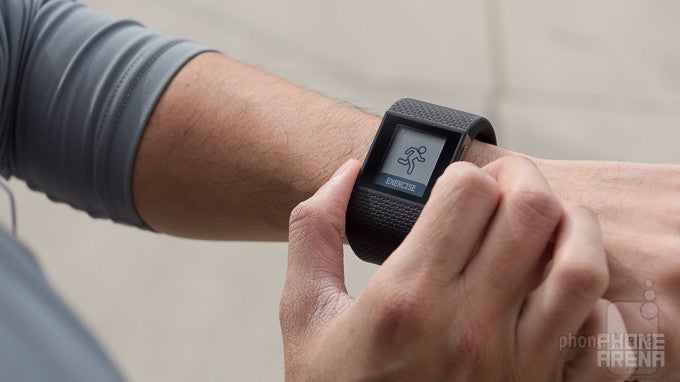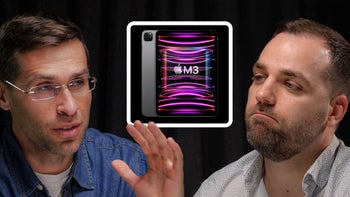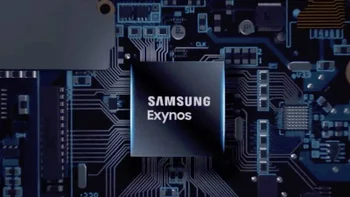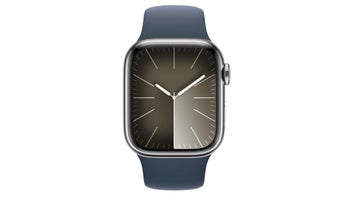Fitbit Surge Review

Introduction
If you haven’t noticed, Fitbit has been somewhat busy of late, evident by the trio of new products they’ve recently announced. First up was their most affordable new offering in the Fitbit Charge, then followed by the heart rate sensor packing Fitbit Charge HR, which now leads us to its latest product – the Fitbit Surge, aka the “fitness super watch.” That’s a peculiar attachment, considering there have been a handful of smartwatches saturating the market, but what makes the Surge befitting of that reputation? At its core, naturally, it’s a fitness tracker, but one that’s on steroids.
Packaging contains:
- Fitbit Surge
- Proprietary charger
- Wireless sync dongle
- Users manual
Design
This is one seriously hulky sized fitness tracker, it doesn’t want to be discrete looking.
Unlike the discrete style of its other fitness bands, the Fitbit Surge is a giant sized looking that screams for attention when it’s worn. No doubt, it’s hulkier in size than anything else the company has designed before, but it’s somewhat necessary to give it that substantial reputation. Hardly a surprise to us, its design is influenced by the company’s other recent bands, the Fitbit Charge namely, as the strap features the same textured and flexible elastomer material – giving it that rubbery feel and sporty look.
Aesthetically, it’s a hard-lined, edgy design that favors a contemporary look. We won’t say it’s downright ugly or incredibly gorgeous, but rather, it’s a safe approach for them to take. At the very least, it’s pretty comfortable to wear for long periods of time, as it contours our wrist perfectly and feels smooth over our skin. Available in three colors and three sizes, its similarity to a watch is evident by the surgical-grade stainless steel buckle it uses, which allows us to adjust it accordingly.
On the underside of the unit, we have the unit’s proprietary charging port and heart rate sensor. Meanwhile, the display is flanked by a total of three physical buttons – one on the left to switch between its menus, and another two on the right that are also used for navigation around the interface.
Display
Even though it’s a monochrome LCD display, it’s highly effective in all sorts of conditions.
In being attached as a “fitness super watch,” the Fitbit Surge features a monochrome square-shaped LCD touchscreen. Even though some might find it blah in appearance, it’s actually quite viewable in all sorts of conditions – both day and night time, as the backlighting helps to illuminate it. Indeed, it’s light on the pixels, but at the very least, it’s able to display relevant data without having us to squint a whole lot, or move in very closely to inspect.
Having an LCD screen is pretty beneficial, seeing that we can view data directly on the Surge – whereas with other fitness trackers that lack a screen, we have to rely on their companion mobile apps to view data. From being able to tell the time, to viewing how many steps we’ve taken, the screen offers us some level of independence. However, it’s only the daily results that we have access through the Surge’s display. To view previous days, we’re still required to check them out through the app.
Oh yeah, we can even view text message notifications through the display as well, which we can proclaim to be a “smart” function for this fitness tracker. Unless it’s passages of text, we can pretty much read the entire body directly on the screen. Additionally, we can use the display to control various music controls as well.
Fitbit app
Workouts are dissected to deliver a deeper understanding of your activities.
We’re not going to go into detail about the Fitbit app, which is available for Android, iOS, and Windows Phone, since we’ve covered it extensively in our previous Fitbit reviews. It’s no different, obviously, but there’s one new category that’s of particular interest in this review – the section in the app pertaining to heart rate.
With the Fitbit Surge and its PurePulse heart rate sensor, it’s constantly flickering to monitor our heart rate. Any hardened fitness buff will surely know and appreciate this new feature, seeing that it’s able to provide better accuracy with the amount of calories we burn throughout the day – both from workouts and through normal activity. Using the app, we can visually track the progress of our resting heart rate (BPM), which in turn can indicate improvements to our health. Of course, the lower the number, it means that the heart muscle is in better condition and doesn’t have to work as hard.
Connectivity
Pairing it with an iPhone 6 Plus via Bluetooth, the Surge is able to synchronize data on a timely basis, which is done as a background process – to minimize the impact to its battery. In addition, we can even have the Surge to allow Caller ID notifications to pop up on our wrist.

Performance
You wear it, and then you forget about it. It’s just that simple!
The beauty of the Surge is found in the various exercise modes it has to offer. Navigating through the interface, we can set the Surge to a specific exercise prior to starting, so that it can adapt and best deliver the correct workout measurements. For example, running outside is obviously different from running on a treadmill – so that’s why the two have their own separate modes. With the multi-sport functionality of the Surge, it meticulously tracks our specific routine to best deliver comprehensive workout summaries, and from there, we can use the app to gauge our progress over time.
Tracking steps and elevation is pretty spot-on too with the Surge. From the looks of it all, it doesn’t fall victim to those phantom hand wave movements that plagued other Fitbits. Sleep tracking is available as well with the Surge, and just like the Charge and Charge HR before it, tracking is done automatically. Frankly, this is a special treat, since we’re no longer needed to place it into sleeping mode. In general, it’s pretty accurate in determining when we’re asleep – and when we wake up.
The best thing about the Surge is its set it, and forget it operation. It’s worn for long periods of time, but it’s only necessary to tinker around it when we have to specify a workout routine. Beyond that, we don’t have to worry about anything else. To tell you the truth, we’re astounded by the comprehensive data the Surge is able to accumulate, which is them organized in a meaningful way through the mobile app.
Battery
At 5 days of battery life, it’s better than the best smartwatches out there.
Fitbit claims that the Surge is able to achieve up to 7 days of usage with its rechargeable lithium polymer battery. In our experience, it’s able to last 5 days before it’s completely tapped out. On few occasions, however, it manages to reach 6 days, but still a day short of its specification. Now, that can be due to the fact that it’s constantly paired with our iPhone 6 Plus for call notifications, which can inadvertently lessen its tally. Nonetheless, we’re not too bummed out by the results – mainly because it’s still better than pretty much all smartwatches.
Conclusion
Okay, we’ll admit that the Fitbit Surge kind of lives up to its claim of being a “fitness super watch.” Hardcore fitness buffs will absolutely fall in love with the comprehensive offering of the Surge, allowing them to specify workout routines for complete accuracy. Add to that, the built-in GPS helps to give the Surge independence from smartphones when it comes to gathering GPS data.
However, its $250 calls for attention because it’s just ungodly expensive – so much so that it falls into the same pricing as many smartwatches. In comparison to them, the Surge can’t compete because it’s almost non-existent with its “smart” functions. Sure, we can receive text and call notifications, but that’s really the extent of what it can deliver, which reduces its value.
In all fairness, the better option to go with is probably the Fitbit Charge HR, as it’s sleeker in design, and carries pretty much the same feature set as the Surge – at a significantly lower cost, too. We applaud Fitbit’s effort in trying to make this so-called fitness super watch, but the exorbitant pricing just limits its reach.












Things that are NOT allowed: